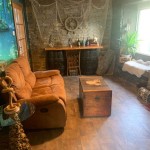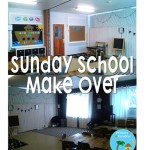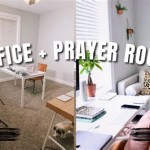Navigating the Shared Bedroom: Decorating for a Boy and Girl
Creating a shared bedroom for a boy and a girl presents a unique set of challenges and opportunities. The goal is to design a space that reflects the individual personalities and preferences of both children while maintaining a cohesive and functional environment. Careful planning and thoughtful consideration of color palettes, furniture choices, and storage solutions are essential to achieving a harmonious and comfortable shared space.
The initial step in designing a shared bedroom is understanding the needs and wants of each child. Open communication is crucial. Involve both children in the planning process by soliciting their input on color preferences, preferred themes, and must-have items. This collaborative approach fosters a sense of ownership and ensures that both children feel their voices are heard. Consider age differences; a teenager will have different requirements than a young child. Compromise is inevitable, and finding common ground is key to a successful shared bedroom design.
Establishing Individual Zones
One of the most effective strategies for creating a functional and satisfying shared bedroom is to delineate distinct individual zones. This allows each child to have a personal space that reflects their unique personality and provides a sense of privacy, even within the shared environment. Several approaches can be used to create these zones, including physical dividers and visual cues.
Physical dividers, such as bookshelves, curtains, or screens, can create a more defined separation between the two sides of the room. A bookshelf can serve a dual purpose, providing storage space while also acting as a barrier. Curtains, particularly those that can be easily opened and closed, offer a flexible option for creating temporary privacy. Screens, available in a variety of styles and materials, can add a decorative element while also defining personal spaces.
Visual cues, such as different wall colors, rugs, or bedding, can also effectively delineate individual zones. Painting each side of the room a different color, or using different shades of the same color, can create a visual distinction. Similarly, placing rugs in each child's area can help to define their personal space. The bedding choices can also reflect individual preferences, with different patterns, colors, and textures used to distinguish each child's bed.
When planning individual zones, it is important to consider the layout of the room and the placement of furniture. Position beds in a way that maximizes space and minimizes intrusion into each other's zone. Consider orientation with respect to natural light and traffic patterns within the room. Adequate lighting is essential in each zone for reading, studying, and other activities. Incorporate personal touches, such as framed artwork, photographs, or decorative items, to personalize each space and reflect individual interests.
Neutral Palette with Accent Colors
Selecting a color palette for a shared bedroom can be challenging, especially when catering to different preferences. A neutral base color, such as gray, beige, or off-white, provides a versatile and unifying foundation for the room. This neutral backdrop allows for the incorporation of accent colors that reflect each child's individual tastes without overwhelming the space. The neutral color also allows the overall design to mature gracefully as the children's tastes and preferences change over time.
Accent colors can be introduced through bedding, curtains, rugs, and decorative accessories. For example, one child might prefer blue and green accents, while the other might prefer pink and purple. By incorporating these colors in a balanced and harmonious way, the room can reflect the personalities of both children without appearing disjointed. Consider using different shades of the same color to create a sense of cohesion while still allowing for individual expression. For example, one child might have a light blue accent wall, while the other has a darker teal accent wall.
The use of patterns can also add visual interest and personality to the room. Consider incorporating geometric patterns, floral prints, or stripes in the bedding, curtains, or rugs. Be mindful of the scale and complexity of the patterns, as too many competing patterns can create a visually chaotic environment. Choose patterns that complement the overall color palette and enhance the design aesthetic. Consider using patterns as a visual cue to define individual zones. For example, one child's zone might feature a striped rug, while the other's features a floral rug.
When accessorizing the room, choose items that are both functional and decorative. Consider adding throw pillows, blankets, and wall art that reflect each child's interests and personality. Ensure that the accessories are age-appropriate and safe for children. Avoid items that are fragile or could pose a hazard. Regularly update the accessories to reflect the children's evolving tastes and interests. Rotate items seasonally to keep the room fresh and engaging.
Optimizing Storage Solutions
Storage is a critical consideration in a shared bedroom, especially in smaller spaces. Implementing clever and efficient storage solutions is essential for maintaining order and minimizing clutter. The goal is to provide ample storage space for each child's belongings while maximizing the available area. Several types of storage solutions can be incorporated into a shared bedroom design.
Built-in storage, such as custom closets, shelving units, and window seats with storage compartments, can maximize vertical space and provide ample storage capacity. Built-in storage is a more permanent solution and often requires professional installation, but it can be a highly effective way to organize and declutter a shared bedroom. Built-in closets can be customized with shelves, drawers, and hanging rods to accommodate different types of clothing and belongings.
Freestanding storage furniture, such as dressers, chests of drawers, and bookshelves, offers a more flexible and portable storage option. Choose furniture that is appropriately sized for the room and that complements the overall design aesthetic. Consider using furniture with multiple drawers or compartments to provide separate storage spaces for each child. Labeling drawers and shelves can help to keep belongings organized and prevent confusion.
Under-bed storage is an excellent way to utilize otherwise wasted space. Storage containers, drawers, or trundle beds with built-in storage can be used to store clothing, toys, and other items. Choose storage containers that are easy to access and that fit securely under the beds. Under-bed storage is particularly useful for storing seasonal clothing or items that are not used frequently.
Vertical storage solutions, such as wall-mounted shelves, hanging organizers, and ladder shelves, can maximize vertical space and provide additional storage options. Wall-mounted shelves are ideal for displaying books, toys, and decorative items. Hanging organizers can be used to store clothing, shoes, and accessories. Ladder shelves provide a stylish and space-saving way to display a variety of items. Ensure that all vertical storage solutions are securely mounted to the wall to prevent accidents.
Regardless of the storage solutions chosen, it is important to encourage the children to maintain their belongings and keep the room tidy. Establish a regular cleaning routine and involve the children in the process. Provide clear guidelines for organizing and storing belongings. Consider implementing a "one-in, one-out" rule to prevent clutter from accumulating. Regularly declutter the room and donate or discard unwanted items.
Sharing a bedroom can be a positive experience for children, fostering cooperation, communication, and compromise. By carefully planning and implementing thoughtful design strategies, it is possible to create a shared bedroom that is both functional and aesthetically pleasing, reflecting the unique personalities and preferences of both children. The key is to involve the children in the process, respect their individual needs, and create a space that is comfortable, organized, and inspiring.

Boy Girl Shared Room Ideas Purewow

20 Brilliant Ideas For Boy Girl Shared Bedroom Architecture Design



Boy Girl Shared Bedroom Ideas Kids Activities Blog

21 Brilliant Ideas For Boy And Girl Shared Bedroom

Thrifty Beautiful Shared Bedroom Ideas Open Doors Hearts

31 Boy And Girl Shared Small Room Ideas Pottery Barn Teen

Boy Girl Shared Bedroom The Full Reveal Anika S Diy Life

5 Design Tips For Kids Shared Spaces
Related Posts







